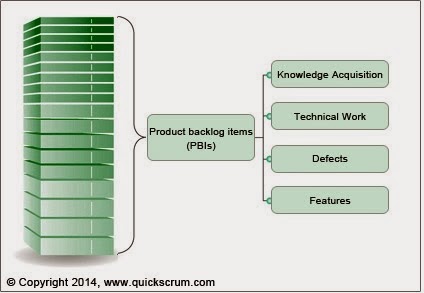The scrum framework and importance
of sprints
Scrum is primarily about dealing with changing
market conditions and introducing changes in the product definition while it is
being developed. It is very difficult, and in certain cases impossible, to
incorporate changes in the features and functionalists linked with the product
while its development is currently underway. Traditional development methods
such as waterfall do not offer facilities to change the product features once the
development has started, since the entire development occurs in stages and it
is not possible to reverse the stages, or “undo” the work carried out, nor it
is possible to “pause” the development activities and restart them with new
ideals and objectives. Scrum makes this possible because the actual development
is carried out in sprints which generally last for two weeks. It is very easy
to add on, or update the functionality associated with a particular feature
of the product.
In scrum, the project requirements are defined in
the form of user stories, or product backlog items, which constitute
the product backlog. The user stories are arranged as per their priorities and
importance in the backlog, and whenever development is to be carried out, a
small portion or a set of the backlog, usually the top portion which is more
important and carries a higher business value, is transferred to the sprint backlog. During the sprint, each
user story contained within the sprint backlog is taken up for development by
the team members. After the sprint is completed, the completed user stories are
taken up for verification and adjudged whether they are stoppable, and are bug
free.
The main feature of scrum which makes it unique
is that it supports development in iterations known as sprints. The framework
is specially designed to control the sprint, with its checks and counter checks
that help to fulfill the objectives defined in the project. If any new feature
or functionality needs to be introduced in the project, it can simply be
defined as a user story in the product backlog, and subsequently transferred to
the sprint backlog for development. The sprint is the most important activity
of scrum, and the framework has laid down many rules regarding how it should be
controlled. The rules are mandatory, and should be implemented to get the most
out of scrum.
Is it possible to terminate
a sprint abnormally before it completes?
The team members have to complete their development tasks before the sprint
ends. It is imperative that the sprint process be time boxed, and completed properly
if positive results are to be achieved out of scrum implementation. However, under some rare circumstances, a
sprint may be terminated before it can complete its full iteration or cycle. The
product owner decides whether the
sprint can, or should be terminated. Read more

